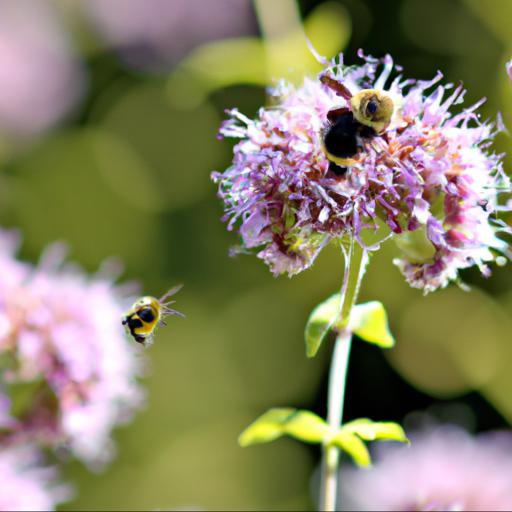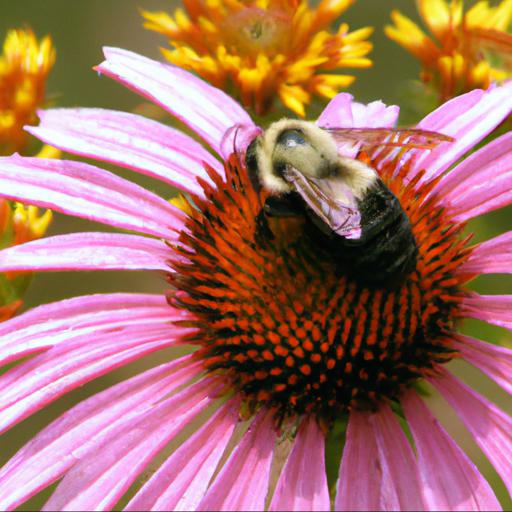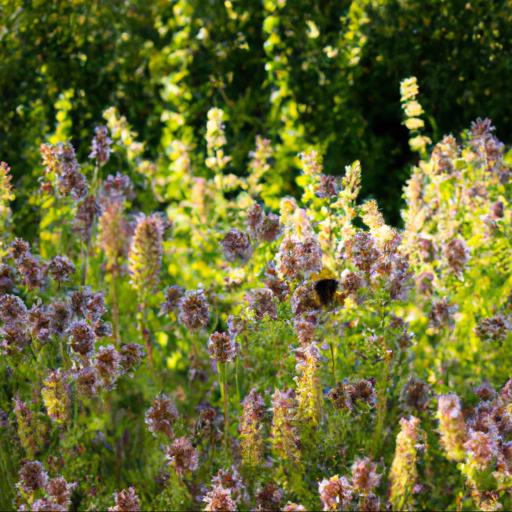As the summer months come to a close, it’s important to remember that our garden plants can still provide a vital source of energy for our local pollinators. Late-summer nectar is a key source of food for bees, butterflies, and other pollinators. To ensure that these important species have the sustenance they need to survive, gardeners should consider planting a variety of plants that produce nectar late into the season.
In this blog, we’ll explore the best plants for late-summer nectar, and how to make sure your garden is a haven for pollinators.
Benefits of planting late-summer nectar plants

Hot days, long nights – if you’re a wildlife lover then you know that late summer is the time to be in the garden. Planting late-summer nectar plants is one of the best things you can do to boost the habitat in your garden and attract a variety of birds, bees and butterflies.
Not sure why you should add late-summer nectar plants to your garden? Here are a few of the top benefits you can expect when you do. For starters, these plants provide vital sustenance – in the form of nectar – for a variety of wildlife during a time when other sources of food may be scarce.
Late-summer nectar plants can also provide valuable shelter for insects, birds, and small animals during the night when temperatures drop. Think about planting cornflowers, knapweed, teasels, red clover, and knautia for loads of late summer nectar. As winter approaches, nectar plants also provide a source of food and nutrients boost for hibernating wildlife.
Nectar plants can also provide valuable protection from wind and bad weather, as well as reducing soil erosion. This is especially important if you live in a windy area.
Not only do late-summer nectar plants offer plenty of benefits and advantages to the wildlife in your garden, but they also add vibrant, bold colors that are sure to take your breath away. With bright hues of purple, blue, pink, and yellow, plus a variety of different species, you’re sure to find something to suit your garden’s design.
A lovely addition for any summer garden. Creating and building up a healthy, diverse ecosystem in your garden is incredibly rewarding. Taking the time to attract and protect birds, bees, and other wildlife helps give back something to nature.
Be sure to consider plants for late-summer nectar to make your garden a haven for many of our favorite creatures.
Types of late-summer nectar plants

When the summer months come to an end, gardeners are looking to keep the nectar-filled blooms going into the late season. Nectar plants are an important source of food for honey bees and other beneficial pollinators.
Of course, without the pollinators, we would be without the fruits and vegetables that depend on them! Fortunately, there are many types of plants that can extend the season of nectar-filled blooms. From daisies to coneflowers, there are plenty of options for the wise gardener.
One of the most reliable late-summer nectar sources are coneflowers. Many species, such as Echinacea purpurea, will extend their bloom season into late fall. The densely packed, daisy-like petals create a nectar-rich feast for pollinators.
Coneflowers are also easy to grow, requiring little maintenance once established. Another easy-to-grow option is Joe Pye Weed.
These tall plants, with conical clusters of small flowers, reach up to 7 feet in some cases. They prefer moist soil but can withstand a bit of drought. The flat-topped flowers of Joe Pye Weed are favorites for pollinators, so placing the plants at the back of the garden bed isn’t a bad idea.
Lastly, gardeners may turn to Phlox paniculata for late-summer nectar. These bushy plants can reach 3-5 feet tall and may only bloom for a few weeks in the late season before they stop producing nectar.
But while they’re in bloom they create a feast for pollinators. Plant them in full sun and make sure to deadhead them throughout the season to keep the flowers fresh and inviting. In conclusion, there are many types of plants that can provide late-summer nectar for pollinators. From coneflowers to Joe Pye Weed and beyond, the wise gardener has a plethora of options for keeping nectar-filled blooms around for honey bees and other beneficial insects.
Tips for planting and caring for late-summer nectar plants

onlyAs summer draws to a close, many gardens start to appear in need of a bit of a pick-me-up. Fortunately, there are some flowering nectar plants that come into their own as the weather cools, offering a feast of colour and sweetness that can liven up any garden.
With the right care and attention, you can make these late-summer nectar plants shine and create a beautiful display. Late-summer nectar is best provided by flowers that typically bloom in the later weeks of summer or into autumn. Many varieties of heathers, such as Calluna vulgaris and Erica carnea, are ideal for providing a late summer feast for pollinating insects.
Shrubs including Lavandula angustifolia, with its lovely deep purple flowers, is a great addition for gardens located in milder regions, with foliage and flowers lasting deep into autumn. Aster species, such as the Michaelmas or Heart’s ease, offer a colourful display from late-summer throughout the autumn months.
To care for these delightful nectar plants, you should be sure to plant them in well-drained soil and in areas that receive plenty of sunlight. Keep a regular check on the water levels, as those in drier, more exposed areas may need a supplemental drink. Heavily pruned back in the winter, these plants can spring back to life in summer, ready for the warmer season with their beautiful blooms.
For those wanting to both provide a taste of summer and get the garden ready for winter, why not combine late-summer nectar plants with some daffodil or iris bulbs, ready to burst into life in spring. Planting late-summer nectar providers is a great way to add colour and life to your garden as the weather cools and can look forward to watching your pollinating visitors enjoy their fall feast!
Our video recommendation
Conclusion
This article explores the best plants for late-summer nectar. From bee-friendly flowers like cosmos, zinnias, and asters to shrubs like butterfly bush and rose of Sharon, there are plenty of options for gardeners looking to attract pollinators to their yard.
With a little research and the right choice of plants, you can create a beautiful and beneficial nectar garden that will give you and the pollinators something to enjoy in the late-summer months.
FAQ
What types of plants are best for late-summer nectar?
Late-summer nectar plants include asters, bee balm, coneflowers, goldenrod, Joe-pye weed, and ironweed.
What are the benefits of planting late-summer nectar plants?
The benefits of planting late-summer nectar plants include providing food sources for pollinators such as bees, butterflies, and hummingbirds, as well as providing a colorful and attractive addition to the landscape. Late-summer nectar plants can also help to attract beneficial insects such as ladybugs and lacewings, which can help to control pests in the garden.
What are the best practices for planting late-summer nectar plants?
The best practices for planting late-summer nectar plants include choosing plants that are native to your area, planting in full sun, providing adequate water, and avoiding chemical fertilizers and pesticides. Additionally, it is important to plant in groups of three or more to attract pollinators, and to provide a variety of plants to ensure a continuous nectar supply.
How can late-summer nectar plants attract pollinators?
Late-summer nectar plants can attract pollinators by providing them with a reliable source of nectar and pollen. They can also provide shelter and nesting sites for pollinators, as well as a variety of flowering plants that bloom at different times. Planting a variety of native plants that bloom at different times throughout the summer can ensure that pollinators have a steady source of food throughout the season.
What are the most common late-summer nectar plants?
The most common late-summer nectar plants are asters, bee balm, coneflowers, goldenrod, and Joe-Pye weed.
How can late-summer nectar plants be used to create a beautiful garden?
Late-summer nectar plants can be used to create a beautiful garden by adding color and texture to the landscape. Popular late-summer nectar plants include coneflowers, asters, and zinnias, which can be planted in a variety of colors and sizes. Adding these plants to a garden will attract pollinators and create a vibrant, colorful display.

